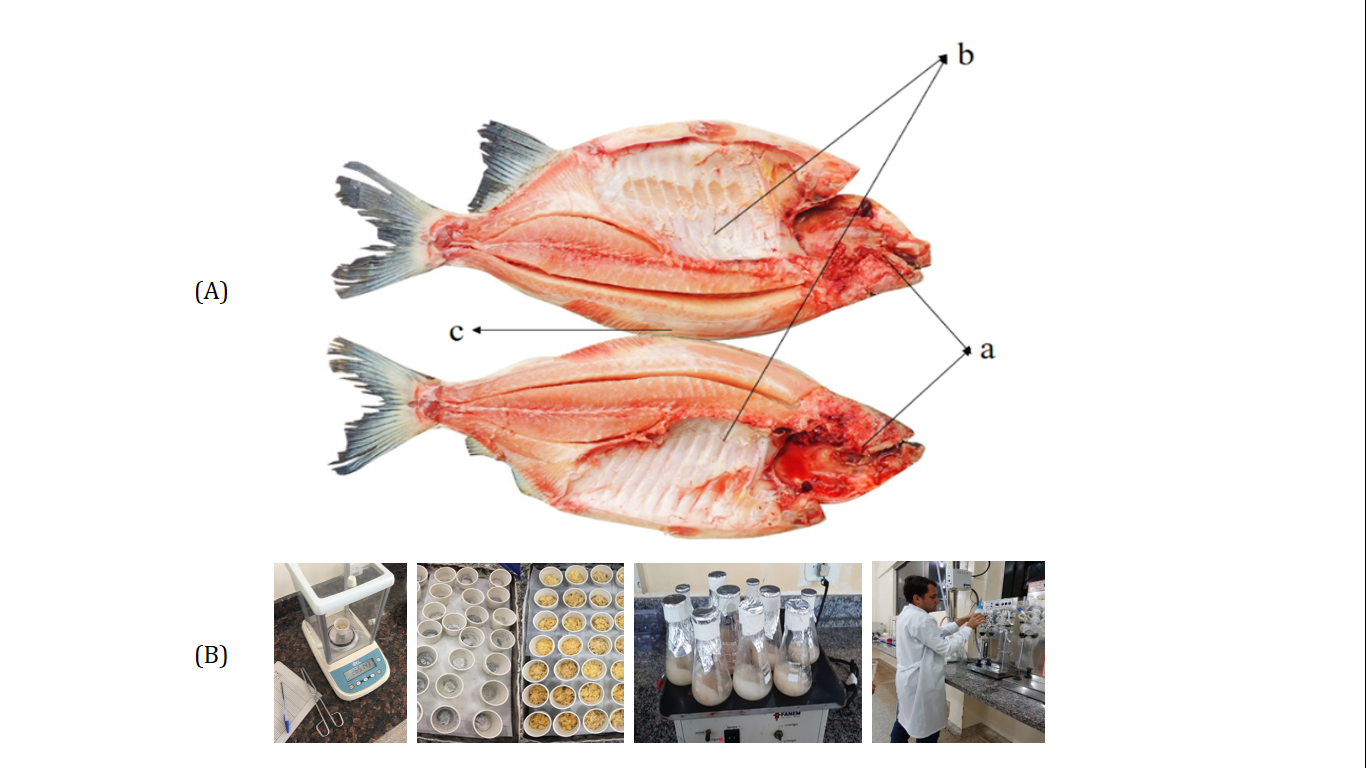Mineral composition, omegas and lipid quality in the visceral fat residues of tambaqui (Colossoma macropomum Cuvier, 1818)
DOI:
https://doi.org/10.21708/avb.2022.16.3.10790Resumen
This study aimed to determine the mineral composition, fatty acid profile, omegas and lipid quality indexes in the visceral fat residues of tambaqui (C. macropomum). Three pieces of visceral fat were collected from 20 fish weighing 1.10 ± 0.10 kg, which were homogenized and sent for compositional analysis. Minerals were determined by AOAC Official method 969.23 and 968.08. The fatty acids were grouped to calculate the ∑PUFAs/∑SFAs fatty acids ratio and the proportion of polyunsaturated fatty acids ∑PUFAs (n-6/n-3), atherogenicity indixes (AI) were calculated, thrombogenicity (TI), and ratio between hypocholesterolemic and hypercholesterolemic fatty acids (HH). Mineral elements were found, 0.68 ± 0.015 mg/100g of total iron, 159.16 ± 14.32 mg/100g of Na+, 63.90 ± 5.11 mg/100g of K+, 10.28 ± 0. 62 mg/100g of Ca2+ and 7.31 ± 0.58 mg/100g of Mg2+. As for fatty acids, 40.10% of SFAs, 38.10% of MUFAs and 21.80% of PUFAs. The calculations indicated significant values of omegas, 3, 6, 7 and n-7. There were ∑PUFAs/∑SFAs ratios of 1.84 and ∑PUFAs (n-6/n-3) of 6.22, with an AI of 0.50 and a TI of 0.93 and HH of 2.16. The 1.0 ± 0.10 kg tambaqui visceral fat residues can be evaluated as having high nutritional value, in addition to being a viable option for oil extraction and inclusion in animal feed.
Descargas

Descargas
Publicado
Número
Sección
Licencia
Derechos de autor 2022 Acta Veterinaria Brasilica

Esta obra está bajo una licencia internacional Creative Commons Atribución 4.0.
Autores que publicam na Acta Veterinaria Brasilica concordam com os seguintes termos: a) Autores mantém os direitos autorais e concedem à revista o direito de primeira publicação, com o trabalho simultaneamente licenciado sob a Licença Creative Commons Attribution que permite o compartilhamento do trabalho com reconhecimento da autoria e publicação inicial nesta revista. b) Autores têm autorização para assumir contratos adicionais separadamente, para distribuição não-exclusiva da versão do trabalho publicada nesta revista (ex.: publicar em repositório institucional ou como capítulo de livro), com reconhecimento de autoria e publicação inicial nesta revista. c) Autores têm permissão e são estimulados a publicar e distribuir seu trabalho online (ex.: em repositórios institucionais ou na sua página pessoal) a qualquer ponto antes ou durante o processo editorial, já que isso pode gerar alterações produtivas, bem como aumentar o impacto e a citação do trabalho publicado (Veja O Efeito do Acesso Livre).


 Esta obra está licenciada com uma Licença
Esta obra está licenciada com uma Licença 